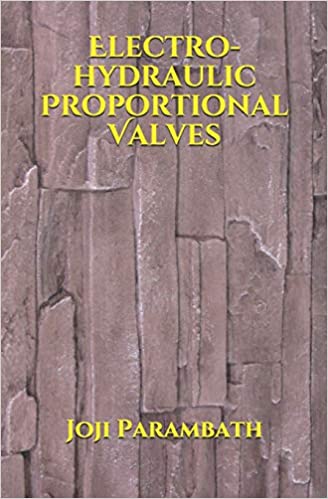The most common valve configurations used for hydraulic control systems range from the discrete valves controlled by the electromagnets to infinitely variable valves, controlled by the special proportional electromagnets (or torque motors). Proportional valves are devices for obtaining the finely variable flow and pressure controls using proportional electromagnets. They were developed as a low-cost alternative to the expensive servo valves.
Open-loop Proportional Valve
Electro-hydraulic proportional valves can be used in the open-loop configuration or closed-loop configuration. An open-loop electro-hydraulic proportional valve system is essentially an arrangement of a proportional solenoid valve precisely controlled by an electronic control unit (controller) to position the valve spool at the desired position and obtain the precise control of the associated system. The required position of the spool can be set by using the potentiometer in the electronic controller. It is thus possible to control the position or speed of the actuator in the system remotely. However, it may be noted that the controller does not confirm the actual position or speed.

Electro-hydraulic Proportional Valves
Joji Parambath
The concept-oriented book explores the technology used in proportional valves. The book also describes the construction of electro-hydraulic proportional valve systems using proportional solenoids, the details of various types of control elements, and the characteristics of proportional valve systems.
Closed-loop Proportional Valve
The proportional valves were initially designed for the open-loop control systems in less sophisticated applications, but, they are also used in the closed-loop control systems depending on the complexity of applications.
A closed-loop proportional valve mainly consists of a proportional valve, an electronic control unit, and a transducer [Linear Variable Differential Transformer (LVDT)]. Here, the actual position of the spool can be measured by the transducer. The output signal from the transducer is fed back to the control unit.
A summing amplifier in the electronic control unit calculates the difference between the required spool position (set value) and the actual spool position (actual value). The difference is then fed to the controller. The controller always acts in such a way as to reduce the difference between the set value and the actual value to place the valve spool at the desired position. In this way, more accurate control can be obtained in the closed-loop proportional valve system.
Further, the electronic control unit of the valve uses various techniques, such as ramping, pulse width modulation (PWM), and dithering, to achieve certain additional functions.
Applications of Proportional Valves
Despite their nonlinear response, the use of proportional valves is an inexpensive way to control the position, velocity, or force on hydraulic equipment for full adjustability and repeatable performance. They fit perfectly into the automated control applications. They are becoming more popular for industrial/mobile hydraulic applications.
A detailed explanation of proportional valves is given in the book cited above.
Joji Parambath
Director
Fluidsys Training Centre Pvt Ltd
Bangalore, India
